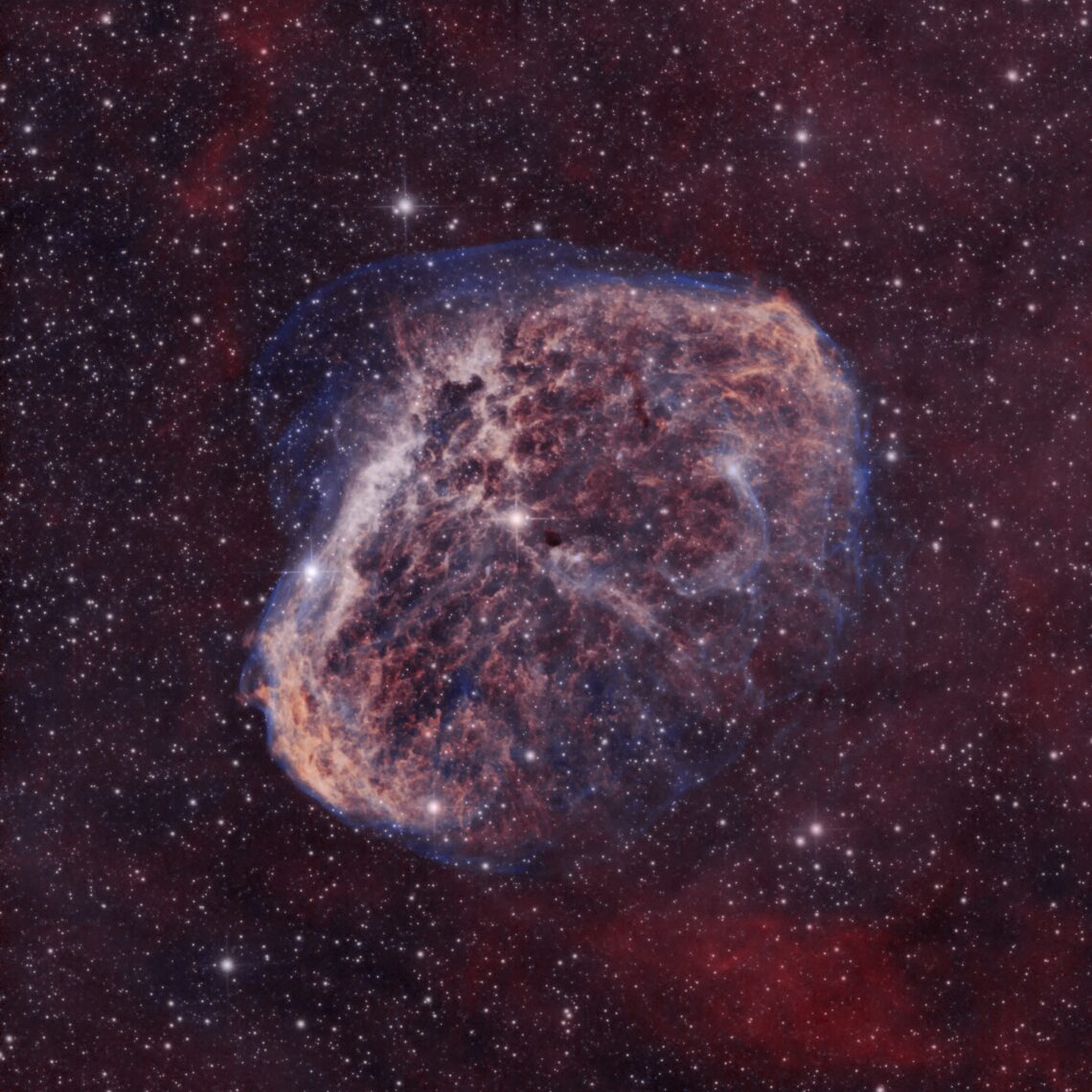This is one of the first light images with our new setup at the TURMX Observatory, hosted at the e-EyE Astronomical Complex in Extremadura, Spain. It is only a quick snapshot with a total of 6 hours of exposure time with the Baader CMOS-optimized ultra-narrowband filters as a first test of the system. Turned out very nicely – the filters perform very well.
The target is the famous Crescent Nebula, NGC6888, in the constellation Cygnus. The nebulosity is formed by the outer shells of the Wolf-Rayet star WR 136, which has undergone episodes of significant mass loss. In combination with strong stellar winds this material forms the intricate nebula, which is still expanding.

| Telescope | Planewave CDK17, D=430mm, f=2940 mm |
| Camera | QHY600M Full Frame CMOS, 9-Slot Filter Wheel with Baader Filters |
| Exposures | 6 hours total, HO 66+55 x 180sec, BIN 2×2 |
| Data taken | 16 – 20 September 2021 |
| Site | TURMX @ E-EyE Observatory, Extremadura |
| Processing | Robert Roth, 3 October 2021 |
